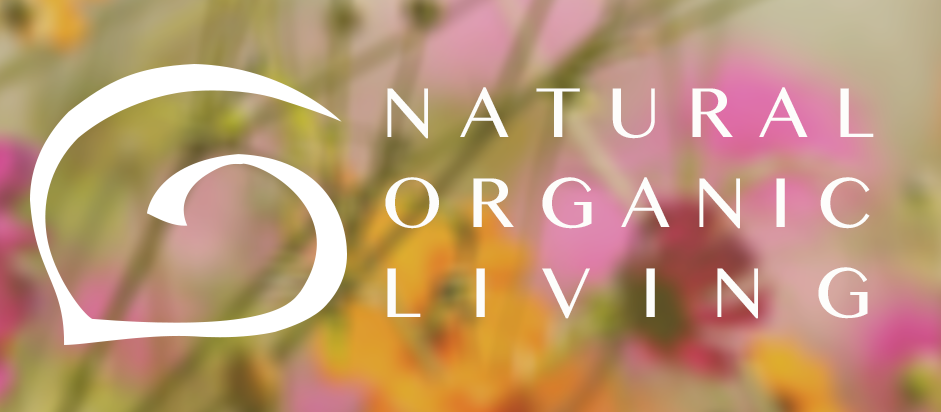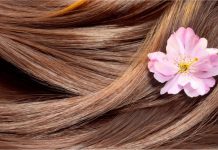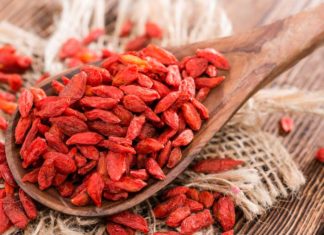
Knowing what food is blood thinner can help you in two way. One if you don’t have enough platelet in your blood system this means you do not have enough clotting agent to help your clot fast and this food you should avoid and two if you have clot formation due to various reason in your blood these are the food you should eat more. As you know, chemically made by man is not always balanced. The side effect is the bypass of chemicals compound. However, if your condition is not serious having natural blood thinners made in a balanced way by nature can be an option for you.
What is a Blood clot?
Normally blood clot is a protective thing stopping bleeding when you have cuts, preventing further blood loss. However when it is formed out of normal protection way it can cause harm to many of us. There are many way blood clot can potentially form. It can be formed due to recent surgery, travelling for more than 4 hour, bed rest for a long period, obesity, pregnancy, family history, smoking, cancer or taking birth control pills.
Normally blood clot for in deep vein causing blood restriction usually on your leg or arm. when this occurs you will notice swelling, pain or cramp, stiffness in the area, there is skin discolouration usually reddish or bluish in tone and the skin is warm to touch. This clotting is called deep vein thrombosis(DVT). This is not as serious when the clot moving to the lung which is called pulmonary embolism (PE). When this occurs you will notice a shortness of breath, chest pain, rapid heart rate and unexplained coughing and possible coughing with bloody mucus. At this stage, it best to call the doctors. Another dangerous place a blood clot can travel to is your brain and heart.
At some of these stage symptoms, it may be difficult to take action as it is too late or too serious. However, if you know, you are travelling for a long period or any one of those possibility mentions above it does help to know incorporate natural blood thinner food into your diet a mean of protection and prevention.
As we are aware that most medicines, blood thinner has a lot of side-effects. From severe bleeding from a minor wound to headaches, stomach pain, or dizziness. So, unless you need blood thinner as prescribed by your doctor, the better choice may be including natural blood thinner in your diet. There are a lot of natural foods that have been said to be able to prevent clotting.
However, natural blood thinner is not exactly easy to get right.
If you have signs like uneven heart rate or congenital heart defect, or if you have had a heart valve surgery. These causes increase the risk of life-threatening blood clots. Such blood clots can cause heart attacks or strokes. Blood thinners reduce the risk of heart attack and stroke by reducing the risk of blood clots.
For preventive measures to avoid such events from happening, you can consider taking a natural blood thinner.
Of course, on the other spectrum of blood clotting is excessive bleeding, when your blood is too thin with not enough or low level of platelet in your blood to protect yourself from bleeding. If that’s your case, then you’re best to avoid natural blood thinners. Especially if you are already taking anticoagulants prescribed by a doctor, like warfarin, then natural blood thinner can really interfere with your medications. One of the main side effects of blood thinners is the increased risk of bleeding (usually by blood in the stool or urine, bleeding or bruising). Because natural substances that have blood thinning activity may also have this side effect, taking it with anticoagulants may increase the risk of bleeding. For these reasons, use natural blood thinners only under the supervision of a doctor who can monitor your bleeding time and blood clotting.
Sign to look for if you have thin blood or thrombocytopenia or mild thrombocytopenia. When you get a small cut, and it takes a long time to clot up and heal. Even when you brush your teeth, it takes a long time for the bleeding to stop. Another sign is when you easily get bruises; it comes frequently and easily. Another serious sign is when there is blood in your stool or urine. In these cause, please avoid or decrease in these natural blood thinner food.
There are other salicylate-rich foods including honey, spicy mint leaves
Here are some popular natural blood thinner that you should know about, so that you can either include them in your diet or pay attention to avoid it, depending on your situation
Nattokinase supplementation
Nattokinase is an enzyme capable of breaking down Fibrin – a part of normal blood clotting. Nattokinase is present in fermented soybeans. Nattokinase is known to be an effective blood thinning agent, which helps to reduce the amount of fibrinogen, a natural substance in the blood clotting system.
Each of us needs some fibrinogen to prevent haemorrhaging problems, but the amount of fibrinogen can increase due to age and blood clots.
Nattokinase should be added on an empty stomach.
And only 100-300 mg Nattokinase should be added daily.
However, people who bleed easily, or who have new bleeding sores, surgical procedures, strokes or heart attacks should not eat nattokinase.
Do not add nattokinase to your daily meal for at least 2 weeks before surgery.
Drink functional foods supplemented with Bromelain
Although bromelain is present in pineapple, pineapple diets do not have any beneficial effect on blood thinning.
Bromelain reduces platelet adhesion. Bromelain is an enzyme derived from pineapple (pineapple) that inhibits the synthesis of fibrinogen. Bromelain also directly reduces fibrin and fibrinogen and acts as a blood thinning agent by reducing the ability of the platelets to over-stick.
The usual supplemental dose recommended is 500-600 mg Bromelain daily.
But do not take Bromelain supplements with other anticoagulants as they may cause excessive bleeding.
Although bromelain is present in pineapple, pineapple diets do not have any beneficial effect on blood thinning.
Try garlic
Garlic is a popular natural blood thinning agent, reducing the risk of heart attack, reduces plaque and high blood pressure. Garlic contains Allium and allicin compounds that are thought to help lower cholesterol and triglyceride levels in the blood, thus prevent the formation of blood clots. Also, the antioxidant properties of garlic are useful in preventing the damage of free radicals.
The usual dose is a garlic clove a day.
Garlic is a popular natural blood thinning agent, reducing the risk of heart attack, plaque reduction and high blood pressure.
Add vitamin E and magnesium
Vitamin E is a powerful blood thinning agent that can prevent platelet aggregation (platelets stick together). Alpha-tocopherol in vitamin E can decrease the ability of blood platelets to clump together and form clots. Also, it can help your blood vessels to expand, thus leading to greater blood volume to pass through. Also, vitamin E prevents the formation of a protein necessary for blood clotting.
Vitamin E supplements can be obtained from foods such as wheat germ, eggs, dark green leafy vegetables, peanuts, almonds, avocados, and spinach. Experts recommend that 15 milligrams of vitamin E per day should be added to dilute the blood.
Magnesium also stimulates vasodilation, thereby increasing oxygenation in the blood.
Make sure you get enough vitamin E and magnesium to prevent platelet aggregation.
Eat onions
Enhancing onions in the diet helps prevent platelet aggregation. Onion contains Adenosine which acts as an anticoagulant, preventing blood clots. It also has flavonoids such as quercetin, which can aid hypertension by thinning the blood. The antioxidants also fight off free radical that can damage cell tissues. Eating live onions is the best way to take advantage of onions.
Use ginger to reduce blood clotting
Further research is needed to confirm the link between blood thinning and ginger consumption. However, it is believed that ginger has a compound that dilutes blood by reducing the freezing and clotting of blood and platelets. Also, this substance also reduces the amount of cholesterol absorbed in the body. Ginger also helps lower blood pressure by relaxing the muscles around the blood vessels.
You can consume ginger in the form of raw ginger, powder or capsules. But cooked ginger is the most effective.
Ginger also helps lower blood pressure by relaxing the muscles around the blood vessels.
Add turmeric when preparing food
Turmeric is a popular spice in Indian and Middle Eastern cuisine. Adding turmeric to the dish also helps control blood clots. Turmeric is used as a cooking spice and is a natural home remedy for many health problems. The main anticoagulant in turmeric is Curcumin, which helps to reduce platelet aggregation which coagulates. Another feature of turmeric is that it can reduce bad cholesterol, thus prevent the formation of plaque in the arteries and avoid risks of heart attack. However, the effect of Curcumin is similar to that of Warfarin. Therefore, it should not be used in combination with anticoagulants., otherwise it may lead to excessive bleeding.
500 mg-11 g of turmeric should be consumed daily.
Turmeric is used as a cooking spice and is a natural home remedy for many health problems
Boost fish and fish oil in the diet.
Using fish products when cooking will help to thin the blood. High-fat fish contain omega-3 fatty acids that help to reduce blood pressure and reduce the risk of heart disease. Fish containing high levels of omega-3 fatty acids include mackerel, tuna, salmon, anchovy, herring.
Platelets tend to stick to blood vessels to form blood clots. Omega-3 fatty acids help reduce platelet adhesion. Omega-3 also slows the clotting process, preventing the onset of a stroke or heart attack.
Low-dose omega-3 supplements can be prescribed to prevent complications such as haemorrhaging or hemorrhagic stroke.
But of course, you can’t abuse it. Supplementing with over 3,000 mg of fish oil per day may increase the risk of bleeding.
Omega-3 fatty acids help reduce platelet adhesion
Use olive oil
Olive oil is made by grinding and pressing the olive. The polyphenols in olive oil have anti-inflammatory, antioxidant, anticoagulant and anti-coagulant properties that can inhibit blood clotting and “thrombi”. The “thrombi” can plug narrowed arteries and precipitate heart attacks and strokes, so using olives oil can help prevent this risk. Olive oil also aids the blood circulation in the body, thus preventing it from getting clotted in between the veins and arteries.
Drink pomegranate juice.
Pomegranate juice is rich in polyphenols, which we already know that has the potential to improve blood circulation. Polyphenols can fight off free radicals that otherwise would oxidise unhealthy cholesterol and turn it into plaques, clogging your arteries and form blood clots. It can also prevent platelet clumping and combat against thromboxane, a substance made by platelets that causes blood clotting and constriction of blood vessels. The level of polyphenols in pomegranate is higher than in red wine or green tea, making a wonderful natural blood thinner. In addition, pomegranate juice helps lower systolic blood pressure.
On the other hand, there are concerns that, like grapefruit, pomegranates may interact with many medications, such as warfarin, ACE inhibitors, statins, and blood pressure medications. So it is best to talk to your doctor about medications and ask if the drug interacts with the pomegranate.

Pomegranate juice is also rich in polyphenols and has the potential to improve blood circulation
One important thing to remember does not use anticoagulants or replace them with naturally occurring blood clotting foods without consulting your doctor.
Although many natural substances have the potential to prevent blood clots, the way it works can be very different for each person. You need to find out and use the right amount to use it. For more information about natural blood thinners, please visit: https://naturalorganicliving.com.au/




















